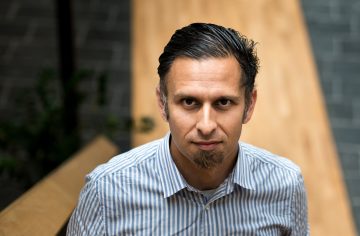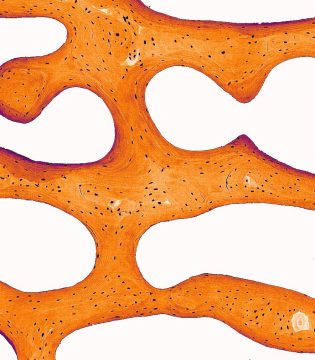GRANT. Furqan A. Shah wants to improve the quality of life for patients with, for example, hip or knee prostheses. He and the research team he leads at the Institute of Clinical Sciences are seeking to develop a tool for predicting how an individual’s bone tissue is affected by the interface with metal. The aim is to tailor the design of every prosthesis so that the structure of the implant stimulates the surrounding bone.

Photo: Jakob Lundberg
The future is 3D-printed metal implants that are partially porous and individually configured to match the requirements of the adjacent bone. Shah wants to create these for hundreds of thousands of patients who receive surgically inserted prostheses.
“I hope my research will lead to prostheses with better healing properties and long-term function. I want to reduce the number of failures and revision surgeries. Overall, the aim is improved quality of life for patients with prostheses of this type,” says Furqan A. Shah, Associate Professor in Biomaterials at the Institute of Clinical Sciences, Sahlgrenska Academy.
“This is the dream lab”
Furqan A. Shah has been awarded a Starting Grant by the Swedish Society for Medical Research (SSMF). This is a four-year establishment grant for young researchers.

Photo: Jakob Lundberg
“It’s a very prestigious award and, for me, an important milestone toward gaining academic independence and the chance to establish my own research group.”
After his studies in the UK, Shah arrived at the University of Gothenburg as a doctoral student in 2012. Since then, he has been conducting research in biomaterials at Sahlgrenska Academy.
“This was the absolute dream lab for me. It was here in Gothenburg that the story of this research began, in the 1960s, with Per-Ingvar Brånemark’s discovery that living bone integrates with titanium — osseointegration, as it’s called.”

Photo: Furqan A Shah
Tailor-made design
Today, the implants in, for example, joint prostheses are insufficiently personalized to the bone they are anchored in.
“Unfortunately, today’s metal implants tend to prevent stimulating mechanical forces from reaching adjacent bone tissue. This leads ultimately to bone loss and, in worst case, revision surgery. The design of metal implants must therefore be tailored to individual physiology, such as bone remodeling status (the ability of bone to renew and repair itself). That’s more important than just matching the general stiffness and flexibility of the bone,” Shah says.
Made by 3D printing
Factors like sex, age, and fitness have a bearing on the remodeling ability of the skeleton.
“I think that, in the future, we’ll take tissue samples of bones where implants are going to be anchored. Under the microscope, bone composition can be studied down to the molecular level. In the research project, we’re going to develop a mathematical 3D simulation platform using experimental data on bone quality and remodeling capacity. Then we can optimize implant design so as to maximize the mechanical stimulus for remodeling,” Shah says.

Photo: Furqan A Shah
The individually designed implants are produced in a 3D printer for metal.
“The fact that parts of the implants will be porous provides new scope for stimulating bone-tissue remodeling. The bone will also be able to grow into the implant in a different way than in today’s prostheses.”
BY: JAKOB LUNDBERG
SSMF Starting Grant
Starting Grant by the Swedish Society for Medical Research (SSMF) is a four-year establishment grant in medical science. It is intended to give young researchers with postdoctoral qualifications the opportunity to establish themselves as independent researchers and create their own research group.
Learn more about the SSMF Starting Grant here.











